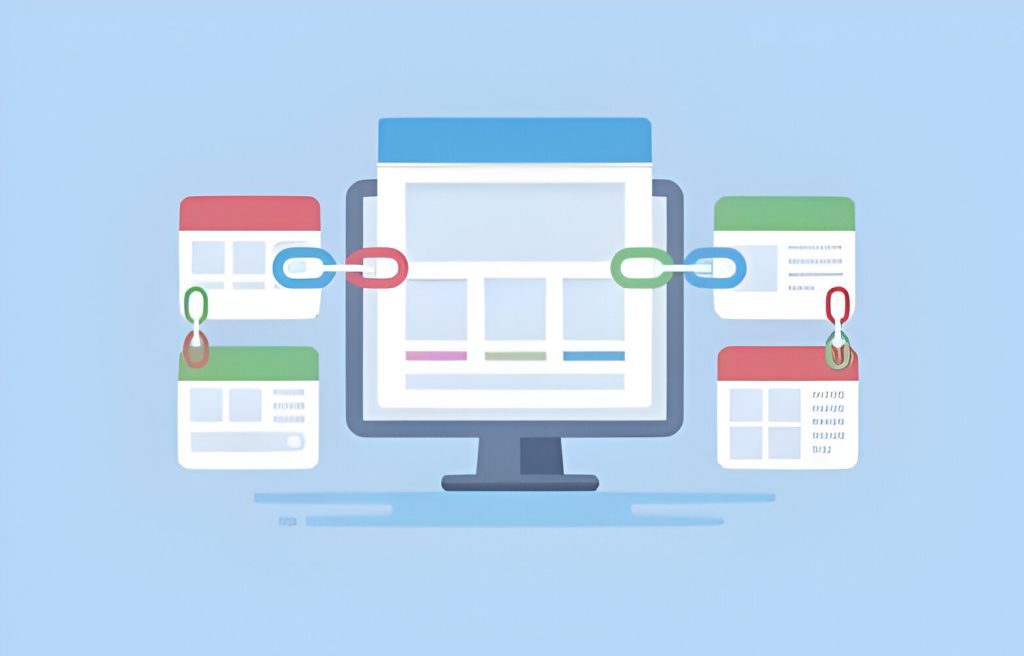
In the world of search engine optimization (SEO), backlinks play a crucial role in determining the visibility and ranking of a website. Backlinks are essentially links from one website to another, and they are a key factor in search engine algorithms. However, not all backlinks are created equal. There are two types of backlinks: dofollow and nofollow. In this article, we will explore the differences between these two types of backlinks, their effects on SEO, and when to use each of them.
What is Dofollow Backlink?
A dofollow backlink is a type of backlink that allows search engine crawlers to follow the link and pass on link equity or “link juice” to the linked website. In other words, when a website links to another website with a dofollow backlink, it is essentially vouching for the linked website’s credibility and authority. Dofollow backlinks are valuable in terms of SEO because they can help improve a website’s organic search rankings.
What is Nofollow Backlink?
On the other hand, a nofollow backlink is a type of backlink that tells search engine crawlers not to follow the link and not to pass on any link equity to the linked website. Nofollow backlinks were introduced by major search engines, including Google, to combat spam and prevent the manipulation of search engine rankings. When a website includes a nofollow attribute in a link, it is essentially telling search engines that it does not endorse or vouch for the linked website.
Dofollow vs. Nofollow Backlinks: Key Differences
The main difference between dofollow and nofollow backlinks lies in how search engines treat them. Dofollow backlinks are considered endorsements by the linking website, and as a result, they can positively impact the linked website’s search engine rankings. On the other hand, nofollow backlinks do not pass on any link equity and do not influence search engine rankings directly.
Another difference is that dofollow backlinks are more common than nofollow backlinks. Most links on the internet are dofollow by default unless the linking website explicitly adds the nofollow attribute. This means that dofollow backlinks are seen as a natural part of a website’s link profile, while nofollow backlinks are typically used in specific situations where the linking website does not want to pass on link equity.
The Effect of Dofollow Backlinks on SEO
Dofollow backlinks can have a significant impact on a website’s SEO. When high-quality websites with strong domain authority and relevance link to a website with dofollow backlinks, it can signal to search engines that the linked website is trustworthy and authoritative. This can lead to improved organic search rankings and increased visibility in search engine results pages (SERPs).
However, it is important to note that not all dofollow backlinks are created equal. The quality of the linking website, the relevance of the content, and the anchor text used in the backlink all play a role in determining the impact of a dofollow backlink on SEO. It is important to focus on acquiring high-quality, relevant dofollow backlinks from reputable websites to maximize the SEO benefits.
The Effect of Nofollow Backlinks on SEO
While nofollow backlinks do not directly impact search engine rankings, they still have value in terms of SEO. Nofollow backlinks can help drive traffic to a website, increase brand visibility, and improve the overall link profile diversity. Additionally, having a mix of dofollow and nofollow backlinks can appear more natural to search engines and can signal that the website is not engaging in manipulative link-building practices.
In terms of SEO, it is important to have a balanced backlink profile that includes both dofollow and nofollow backlinks. This can help create a diverse and natural link profile that search engines view favorably. It is also worth noting that even though nofollow backlinks do not pass on link equity, they can still contribute to the overall authority and credibility of a website.
Situations for Using Dofollow Backlinks
Dofollow backlinks should be used in situations where you want to pass on link equity and improve the search engine rankings of the linked website. If you have a high-quality website with valuable content and you want to vouch for the credibility and authority of another website, using dofollow backlinks can be beneficial. It is important to focus on acquiring dofollow backlinks from reputable websites in your industry or niche.
However, it is crucial to prioritize quality over quantity when it comes to dofollow backlinks. Acquiring a few high-quality dofollow backlinks from authoritative websites can have a greater impact on SEO than a large number of low-quality dofollow backlinks. Building relationships with other website owners, creating valuable content, and promoting your website can help attract high-quality dofollow backlinks.
Situations for Using Nofollow Backlinks
Nofollow backlinks should be used in situations where you do not want to pass on link equity to the linked website. This can include situations where you are linking to websites that you do not fully endorse or situations where you want to prevent search engines from associating your website with certain content. Nofollow backlinks are commonly used in user-generated content, such as blog comments or forum posts, to prevent spam and manipulation of search engine rankings.
It is important to note that using nofollow backlinks does not mean that the linked website is of low quality or lacks credibility. Many reputable websites use nofollow backlinks as a way to manage their link profile and prevent spam. Additionally, using a mix of dofollow and nofollow backlinks can help create a more natural and diverse link profile, which can be viewed positively by search engines.
How Can You Balance Dofollow and Nofollow Backlinks?
Balancing dofollow and nofollow backlinks is essential for creating a healthy and natural link profile. As mentioned earlier, having a mix of dofollow and nofollow backlinks can appear more natural to search engines and can help prevent the manipulation of search engine rankings. It is important to focus on acquiring high-quality dofollow backlinks from reputable websites, while also including relevant and valuable nofollow backlinks in your link profile.
One way to balance dofollow and nofollow backlinks is to prioritize acquiring dofollow backlinks from authoritative websites in your industry or niche. These dofollow backlinks can provide a strong foundation for your link profile and help improve your search engine rankings. Additionally, you can include relevant and valuable nofollow backlinks in your link profile by participating in industry forums, leaving thoughtful blog comments, and engaging with other websites in your niche.
Importance of Dofollow and Nofollow Backlinks in Analysis
Analyzing your backlink profile is an important part of SEO. By understanding the types of backlinks pointing to your website, you can identify areas for improvement and optimize your link-building strategy. Dofollow backlinks can provide valuable insights into the authority and relevance of the linking websites, while nofollow backlinks can help you assess the diversity and naturalness of your link profile.
When analyzing your backlink profile, it is important to consider the quality, relevance, and diversity of your dofollow and nofollow backlinks. Look for opportunities to acquire high-quality dofollow backlinks from authoritative websites, while also ensuring that your link profile includes a mix of relevant and valuable nofollow backlinks. This can help create a balanced and natural link profile that search engines view favorably.
Misconceptions About Dofollow and Nofollow Backlinks
There are several misconceptions surrounding dofollow and nofollow backlinks. One common misconception is that nofollow backlinks have no value in terms of SEO. While it is true that nofollow backlinks do not directly impact search engine rankings, they can still contribute to the overall authority and credibility of a website. Nofollow backlinks can help drive traffic, increase brand visibility, and improve the diversity of a website’s link profile.
Another misconception is that dofollow backlinks are the only type of backlinks that matter. While dofollow backlinks can have a significant impact on SEO, it is important to have a balanced backlink profile that includes both dofollow and nofollow backlinks. Having a mix of dofollow and nofollow backlinks can appear more natural to search engines and can help prevent the manipulation of search engine rankings.
In conclusion, understanding the differences between dofollow and nofollow backlinks is crucial for effective SEO. Dofollow backlinks allow search engines to follow the link and pass on link equity, while nofollow backlinks prevent search engines from following the link and passing on link equity. Both types of backlinks have their place in a well-rounded link-building strategy, and it is important to have a balanced backlink profile that includes both dofollow and nofollow backlinks. By focusing on acquiring high-quality, relevant backlinks and analyzing your backlink profile, you can improve your website’s search engine rankings and visibility.
Other Informative Content:
What is a backlink in SEO ? (2024) – https://highbacklink.com/what-is-a-backlink-in-seo/
Backlinks: The Complete Guide (Plus 7 Ways to Earn the Right Ones) – https://www.similarweb.com/blog/marketing/seo/backlinks/
